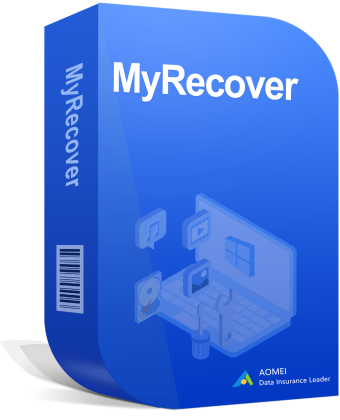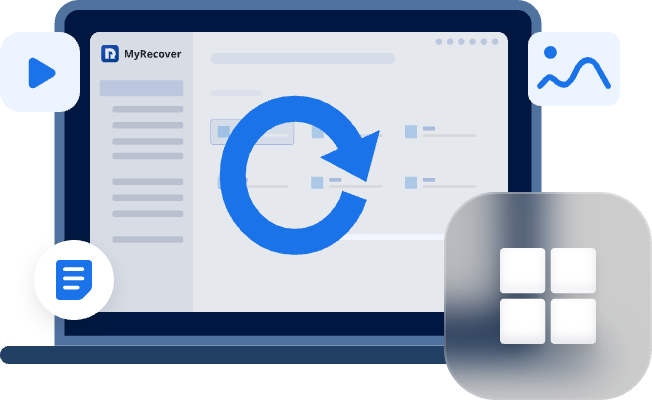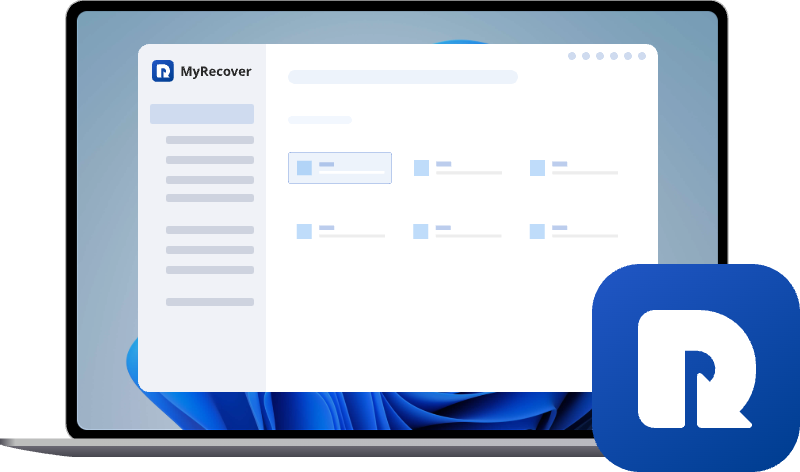Hard Drive Showing Wrong Capacity? Top 7 Fixes
When a hard drive shows wrong capacity than expected, it’s often due to file system errors, outdated firmware, or incorrect formatting. In this article, we’ll explore why this happens and how to fix it. We’ll also cover how to recover your data before applying these fixes.
Why Does My Hard Drive Show Wrong Capacity?
Hi, I've a problem with updating Windows 10 Pro, since it claims that my HDD is full, but actually it is not. Basically, different built-in HDD tools show different information. The storage manager itself shows contradicting information, it is file sizes seem to not sum up correctly. What is the reason and how can I solve the problem? I appreciate any help -thanks!
- Question from DaveM
When you plug in your drive expecting plenty of storage, only to find that Windows reports far less capacity than it should. This is a common frustration many users face. Sometimes, this happens after formatting, partitioning errors, or even malware attacks. This guide will explore the common reasons behind this issue and help you easily restore your hard drive to its right capacity and maintain optimal performance.
Reasons Why Hard Drive Shows Wrong Capacity
When your hard drive shows a smaller capacity than advertised, it doesn’t always mean your data is lost or the drive is defective. In most cases, the issue stems from hidden partitions or formatting inconsistencies. Here are the most common causes explained:
🧿Hidden or Unallocated Space
Sometimes, a portion of the drive remains unallocated, meaning it hasn’t been assigned to any partition. Windows can’t display this space in File Explorer, making your drive appear smaller than it really is.
📢Incorrect Partition Table or Formatting
Formatting a drive with an incompatible file system (e.g., FAT32 instead of NTFS or exFAT) or converting it from GPT to MBR can lead to inaccurate capacity reporting. This is especially true for large drives over 2 TB, as the MBR partitioning scheme does not support capacities beyond that limit.
💽Hidden Recovery or System Partitions
Manufacturers or system tools may reserve hidden partitions for recovery or system management. These partitions don’t show up in File Explorer but occupy real space on the disk.
📀Outdated or Corrupted Firmware
If your drive’s firmware is outdated or corrupted, it may misreport available storage to your system. This is more common with SSDs and external drives.
🛠️Disk Errors or Bad Sectors
Physical damage or logical corruption can also cause capacity discrepancies. In severe cases, Windows may fail to read certain sectors, reducing the total detected size.
How to Recover Data from the Hard Drive Before Fixing
When a drive displays incorrect capacity, it might cause data loss on the drive. Attempting to reformat or reinitialize it could make data recovery more difficult. Therefore, the first step should always be to extract your files safely. MyRecover is a professional tool that excels at recovering files from hard drives with corrupted partitions, missing sectors, or incorrect capacity reports.

- Intuitive interface requiring no technical expertise.
- Faster scanning compared to command-line tools.
- Work on HDD, SSD, USB flash drive, memory card, etc.
- Compatible with all Windows operating systems and Server.
Step 1. Download and install MyRecover on your computer from Microsoft Store, avoid installing it on the drive with wrong capacity.
Step 2. Launch it and select the drive showing wrong capacity, then click "Scan".
Step 3. Choose the files you attempt to recover from the recoverable lists and click "Recover". If you don’t have any data to recover, you can select the "Existing files" folders under the "Path" tab to extract files directly from the hard drive.
The Free Edition lists filenames and file size. But if you want to check file contents before restoring or get unlimited data recovery quota, the Professional edition offers exactly what you need.
Step 4. Select a location different from the original one to save the recovered files.
When the process is completed, the message "Files have been recovered successfully" will pop up. You can check the recovered files in the destination folder path by clicking on the "Browse" button.
How to Fix the "Hard Drive Showing Wrong Capacity" Error
Once your data is safely recovered, you can proceed to fix the hard drive without worrying about losing anything. Try the methods below step by step until the hard drive shows the correct capacity.
Fix 1. Check for Bad Sectors
A corrupted disk structure may also cause inaccurate reading hard drive capacity. Run CHKDSK command to check for bad sectors or file system errors.
Step 1. Open Command Prompt and run it as administrator.
Step 2. Enter the following command "chkdsk G: /f /r" and press "Enter" key. Replace the drive letter "G" with your actual hard drive letter.
Step 3. Wait for the process to complete and then restart your system to check if the hard drive shows correct capacity.
Fix 2. Update Hard Drive
Outdated or incompatible drivers can cause storage misreporting. Update the drivers so that Windows can recognize the correct storage capacity of the hard drive.
Step 1. Press "Win" + "X" and choose "Device Manager" to open it.
Step 2. Expand "Disk drives" and right click on the hard drive, then select "Update driver".
Step 3. Click "Search automatically for updated driver software" to continue the process.
Step 4. Restart your computer and check the drive capacity again.
Fix 3. Delete the Recycle Bin Folder
A corrupted Recycle Bin folder can also lead to incorrect free space readings on your hard drive. To fix this, you can delete the Recycle Bin folder on the hard drive.
Step 1. Open Command Prompt and run it as administrator.
Step 2. Type the following command "rd /S "$RECYCLE.BIN" and hit "Enter" key.
- Notes:✎...
- This command deletes the Recycle Bin folder on the C: drive by default. If the D drive shows incorrect capacity (using D: as an example), enter "D:" to switch to the D: drive before inputting this command.
Step 3. Press "y" to confirm the deletion and start the process.
- ★Tips:
- The system will automatically recreate the Recycle Bin when you next delete a file from that drive.
Fix 4. Delete the Restore Points on the Drive
If the issue occurs on the system drive, it may be because Windows Restore Points sometimes store shadow copies that occupy large hidden space. Deleting all restore points on the drive will free up the occupied space.
Step 1. Type "Create a restore point" in the Start menu and open it.
Step 2. Under the "System Protection" tab, select your system drive and click "Configure".
Step 3. Click "Delete" to delete all the restore point on the drive.
Fix 5. Convert from MBR to GPT
The MBR partition table can only handle hard drives under 2GB. Converting MBR to GPT may resolve the issue of incorrect hard drive capacity display. However, it’s important to note that changing the partition table using Disk Management or DiskPart will erase all data on the hard drive. If you haven’t recovered your data beforehand, it’s recommended to use AOMEI Partition Assistant to convert the partition table without losing any data.
Step 1. Launch AOMEI Partition Assistant and right click the hard drive with wrong capacity, then choose "Convert to GPT".
Step 2. Then a small window will appear, just click "OK" to confirm to convert the disk to GPT.
Step 3. Click "Apply" in the upper left corner to start the conversion.
Then, you can check if the external hard drive showing wrong capacity issue disappear.
Fix 6. Format the Hard Drive
If the hard drive still shows incorrect capacity, you can try formatting the drive. However, formatting will completely erase all data on the drive, regardless of the method used. Therefore, it’s best to first extract the data in advance using professional data recovery software like MyRecover.
Step 1. Press "Win" + "X" and choose "Disk Management" to open it.
Step 2. Right click on the hard drive and choose "Format".
Step 3. Set a file system based on your needs and check the "Perform a quick format" option, then click "Start" to begin the process.
Unfortunately, if you formatted the drive without recovering the data beforehand. Don’t lose hope, MyRecover can help recover data from the formatted hard drive.
Fix 7. Clean All Partitions on the Disk and Repartition (Using DiskPart)
If you’re comfortable using command-line tools, Windows’ built-in utility DiskPart can help you clean all partitions on the disk and reinitialize it to GPT without the need to download any third-party software. Compared to direct formatting, this may save more time, especially for large-capacity hard drives. Similarly, it’s best to ensure the safety of your hard drive data before using this method.
Step 1. Run Command Prompt as administrator.
Step 2. Enter the following command:
diskpart
list disk
select disk X (Replace "X" with your actual disk number)
clean
convert gpt
exit
Summary
When your hard drive shows the wrong capacity, it’s often due to partition table errors, outdated firmware, or corrupted sectors. Before applying any fixes, recover your files first with MyRecover to avoid losing valuable data. The MyRecover Professional edition even allows to retrieve data from unbootable system. In the end, keeping regular backups and updating driver are the best ways to prevent similar storage issues in the future.


